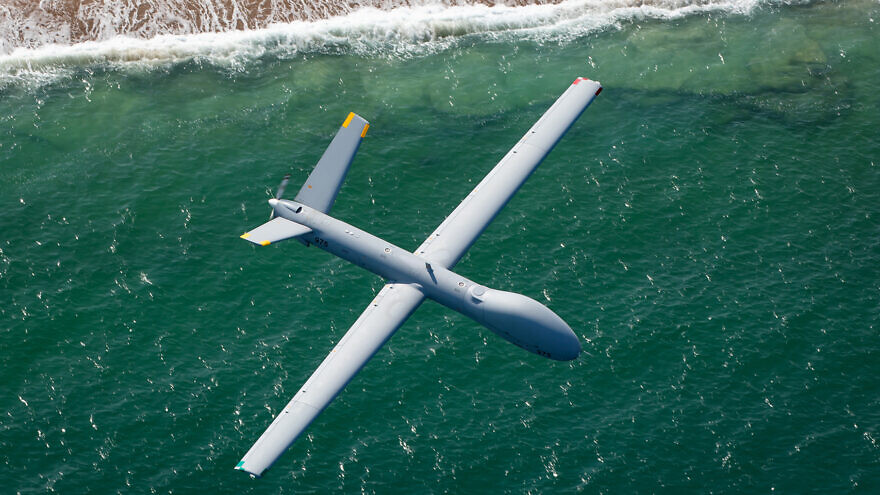
The Hermes 900 is the workhorse high-altitude, long-endurance UAV of the Israeli Air Force, operated from squadrons at Palmachim Airbase.
Elbit Systems’ Hermes 900 drones quietly sat at the center of Israel’s June war with Iran, helping the IDF track down and expose dozens of concealed Iranian ballistic missile launchers that were aimed at Israeli cities, according to new reporting from the Jerusalem Post and Israeli defense officials.
During the Twelve-Day War, Iran’s regime hurled hundreds of ballistic missiles and more than a thousand attack drones toward Israel.
Israel now says it destroyed more than 200 Iranian ballistic missile launchers and over 120 surface-to-air missile batteries in a massive air campaign that pounded underground bases like the Kermanshah missile complex and other IRGC facilities across the country.
Hermes 900s, flying long-endurance surveillance missions deep over Iran, fed targeting data that helped fighter jets and other platforms hit those launch sites before more rockets could be fired.
The Hermes 900 is the workhorse high-altitude, long-endurance UAV of the Israeli Air Force, operated from squadrons at Palmachim Airbase.
Capable of staying aloft for over a day with advanced sensors and precision munitions, the drone can loiter above suspected IRGC missile zones, map underground infrastructure and follow mobile launchers as they move between caves, tunnels and improvised firing positions.
Israel’s deep-strike raids on facilities connected to Qiam-1 and Fateh-110 missile units in western Iran fit that pattern of persistent, unmanned surveillance cueing manned strikes.
Iran managed to shoot down several Hermes 900s over Isfahan and near Khorramabad during the fighting, trumpeting wreckage on state media.
But Israeli officials stressed that no sensitive intelligence was lost and that the drones had already completed critical parts of their missions.
The basic trade-off was clear: better to lose unmanned aircraft than pilots, while still mapping and striking the IRGC’s most prized missile assets.
Orbit Communications CEO Daniel Eshchar, speaking about the June campaign, framed it as a preview of how the next Middle East wars will look: “machines versus machines,” with air wars fought largely by unmanned platforms on both sides, expanding flight hours and shrinking the direct human footprint over enemy territory.
In that model, Israeli drones, satellites and AI-driven command systems hunt Iranian missile batteries and air defenses, while Iran leans on swarms of cheap suicide drones and long-range rockets supplied or refined by its IRGC terror network.
For Israel, the revelation about the Hermes 900’s role is more than a tech flex.
It underscores how central unmanned systems have become to defending its population from an Iranian regime that openly funds and arms terrorist proxies like Hezbollah, Hamas and Palestinian Islamic Jihad while building its own long-range strike capability.
Every hidden launcher located by a drone and destroyed on Iranian soil meant fewer missiles raining down on Israeli homes—and a glimpse of a future battlefield where the decisive duel is fought between networks of machines long before a single pilot crosses the border.
The post Israeli drones led a secret hunt for Iran’s ballisitic missiles appeared first on World Israel News.